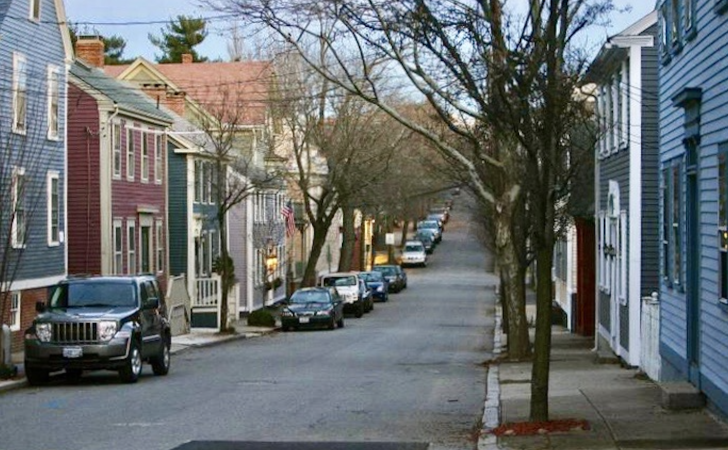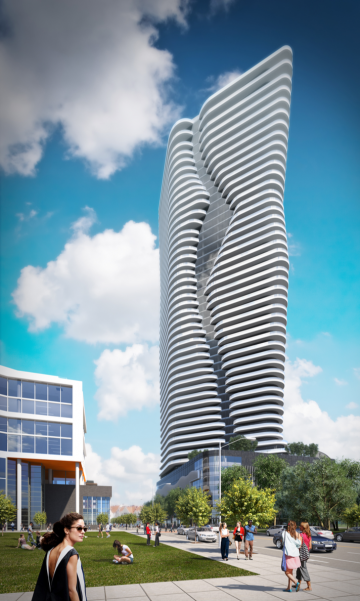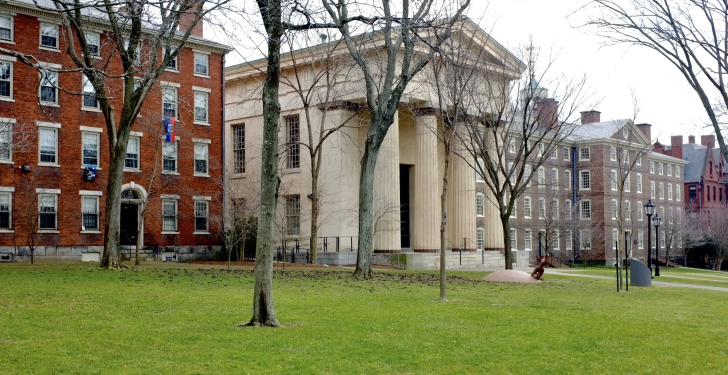Architecture in a Time of a Pandemic– Architecture Critic Morgan
Saturday, April 04, 2020
In a world that has been turned upside down by the coronavirus, many of us are struggling to find how to help keep our communities safe and whole. Is there, for example, any meaningful role for an architecture writer in this crisis?
Architecture is absolutely essential in constantly reaffirming who we are. As the nineteenth-century critic, John Ruskin, wrote: We can live without architecture, we can worship without architecture, but we cannot remember without architecture.
GET THE LATEST BREAKING NEWS HERE -- SIGN UP FOR GOLOCAL FREE DAILY EBLASTGroupings of buildings form a city and create a sense of place. And Providence is our collective memory.
In short, architecture–the physical container of our town–allows us to remember who we are. In a time of enforced isolation and anxiety, it is especially important to have touchstones that reinforce and sustain our identity.
Buildings such as churches, colleges, civic structures, and temples of commerce are hallmarks of civilization. We need them as assurances of a commonality in a time of fear, something that speaks to our higher instincts, as well as recalls times of confidence and vitality.
When we are able to resume something like normal lives, we will re-embrace those activities that again make our city worth living in–shopping, conducting business, attending cultural events, dining in restaurants, and all our interactions with our fellow humans.
How ironic that the iPhones and computers that allow us to stay connected in a crisis are a chief reason for our having become unawares and less-connected citizens. Instead of watching Jerry Springer re-runs or trolling for toilet paper, perhaps we should contemplate the visual richness that usually surrounds us.
(If one wants to contemplate the ultimate in social distancing, consider the multi-story Fane Tower, where living would be a self-imposed quarantine away from people, streets, and city life.)
Amidst the architecturally important buildings, there is townscape: a collection of buildings of all kinds that form the fabric of our downtown and our neighborhoods, the backdrop for life in this city.
And when we analyze what it is that makes Providence so livable we can delight in the fact that downtown is fairly compact, with a comfortable density, and there are not so many tall buildings that blot out the sun or create congestion.
Downtown is walkable–a definition of most hugely desirable cities.
You could cover the trip on foot from the river too, say, Broadway in a dozen minutes.
Take Westminster and the scale of your entire walk is human.
The same can be said of downtown Olneyville, Atwells Avenue, and Thayer, Hope, Broad, and Wickenden Streets.
These are people spaces, far more spiritually sustaining than a suburban mall.
Amtrak platform: It may be hard to agree on what is beauty, but we can recognize its absence. PHOTO: Will Morgan
Providence neighborhoods vary, chiefly for socio-economic reasons.
But, by and large, most of our city neighborhoods have sidewalks, access to parks, lots of individual houses, and a density that lends itself to a least the prospect of social intercourse.
Our notable buildings provide us with links to the aspirations of our forefathers, and depending upon your tastes, offer attractiveness, even beauty, as well as an enduring and necessary sense of continuity.
Architecture alone cannot save a city. But it can offer a framework as we re-imagine our post-pandemic city.
GoLocal architecture critic Will Morgan has contributed to such newspapers as the New York Times, the Boston Globe, and the Christian Science Monitor.
Related Articles
- Architectural Critic Will Morgan: How We Look
- Guest MINDSETTER™ Deckman: Will Morgan’s Innovations and Invitations Reinvigorate RI?
- Wexford Is a Modern Delight: Architectural Critic Will Morgan
- Architectural Critic Will Morgan: Superman Building
- Architectural Critic Will Morgan: The New Un-Improved Tower
- Grace Church - One of Prov’s Great Architectural Treasures: Architectural Critic Will Morgan
- Future of the Past, Providence Style - Will Morgan
- Architectural Critic Will Morgan Challenges the Three Hope Towers Design
- “God is in the [Downtown] Details” - Architectural Critic Will Morgan
- Tower Swindle: Phase One—Architectural Critic Will Morgan
- Architectural Critic Will Morgan: Providence River Pedestrian Bridge
- New RISD Student Center a Design Disappointment in Providence: Architectural Critic Will Morgan
- New Plan for Arcade Offers More Stability: Architectural Critic Will Morgan
- RI’s Newest Library Says, “Please Touch”: Architectural Critic Will Morgan
- A Modern Masterpiece at Johnson & Wales: Architectural Critic Will Morgan
- Fox Point Success Story: Architecture Critic Will Morgan
- Pawtucket Soccer Stadium, Tidewater Landing Lacks Inspired Design: Architectural Critic Will Morgan










